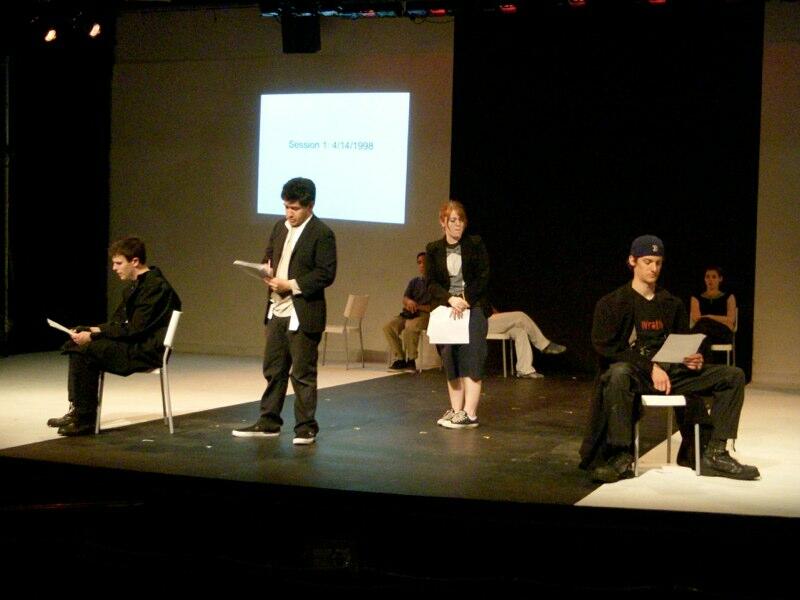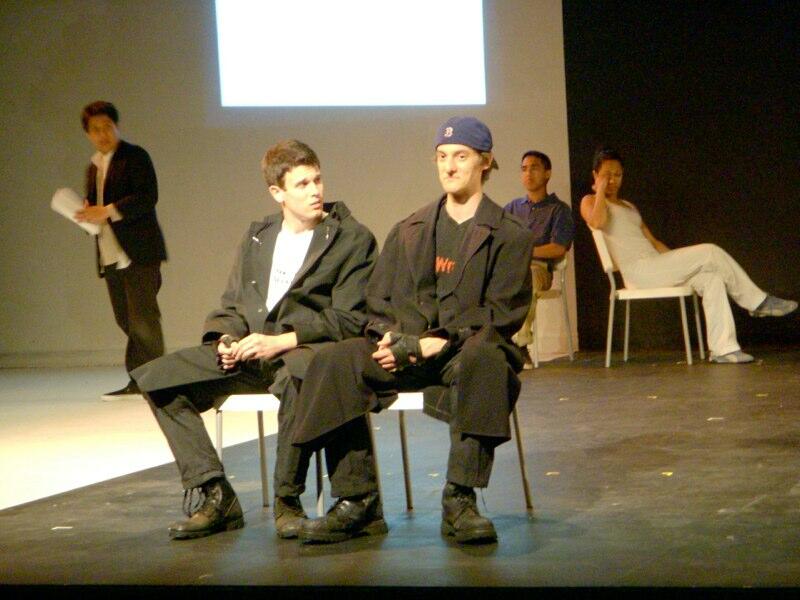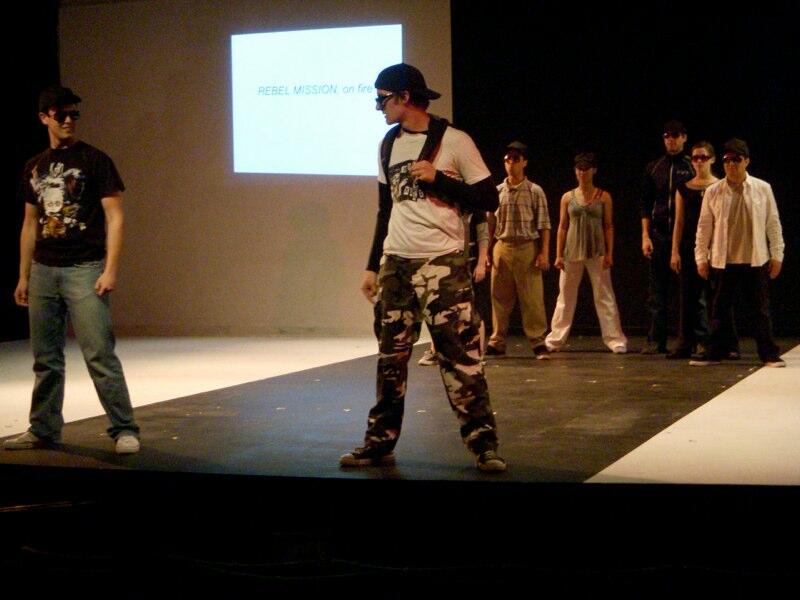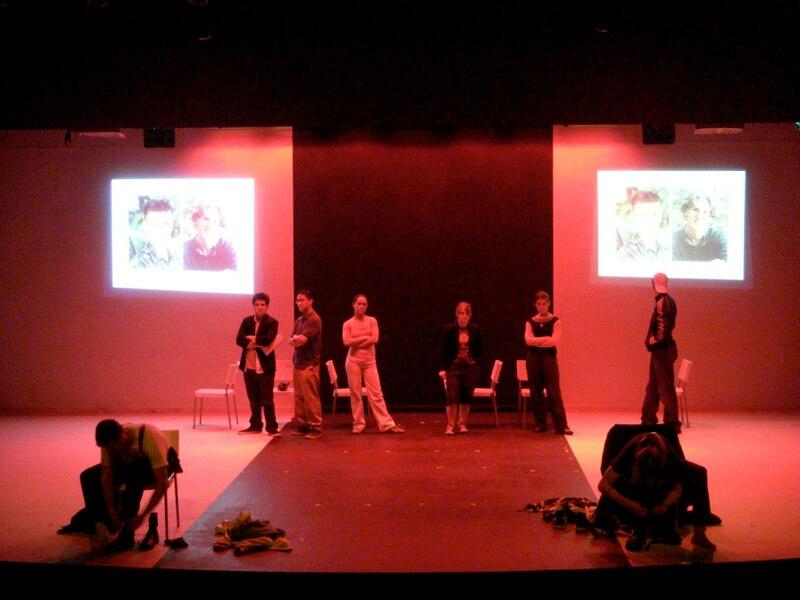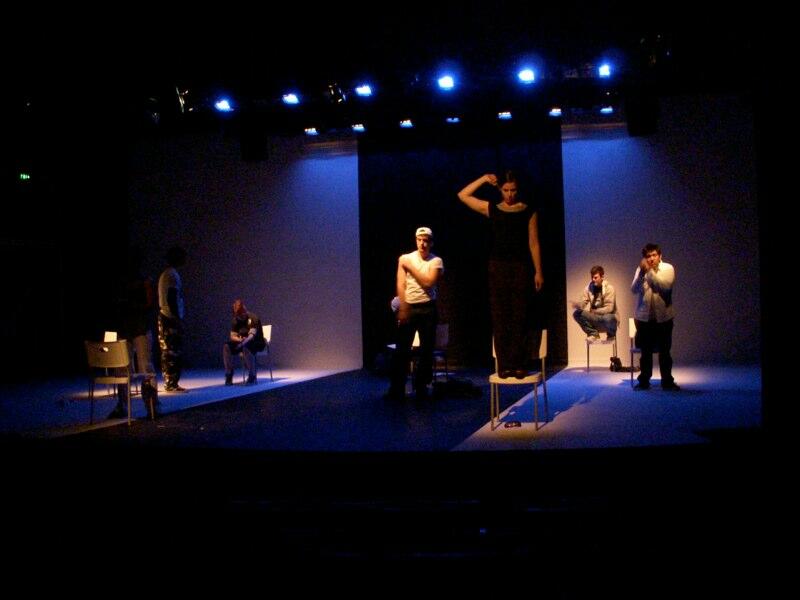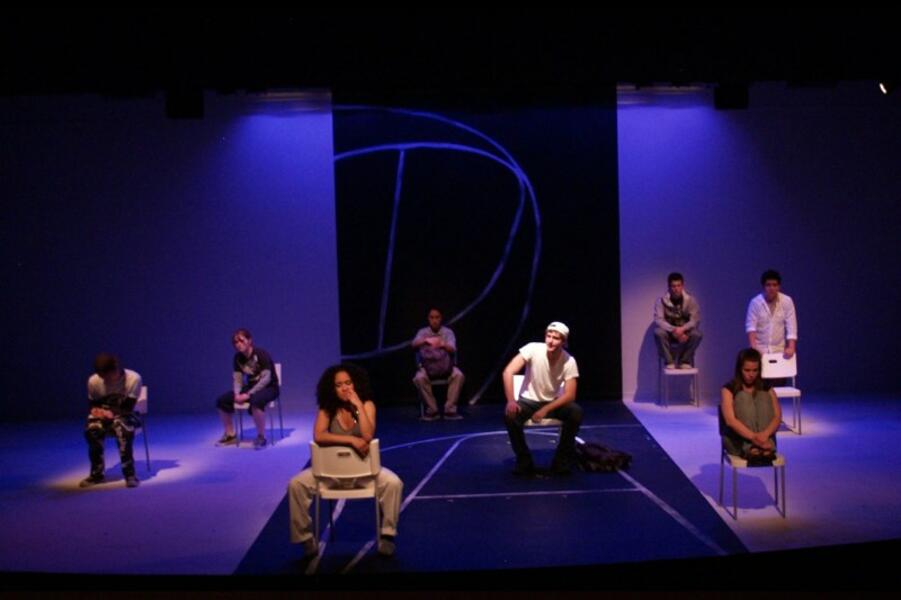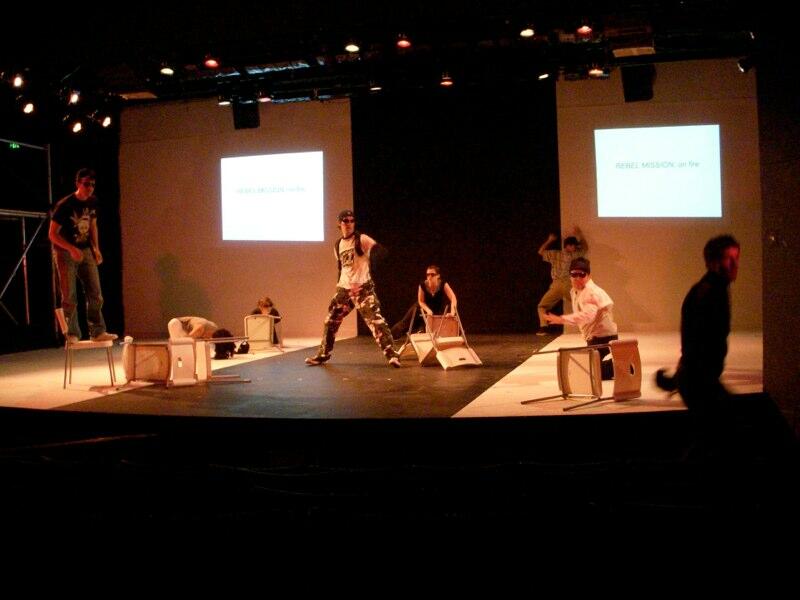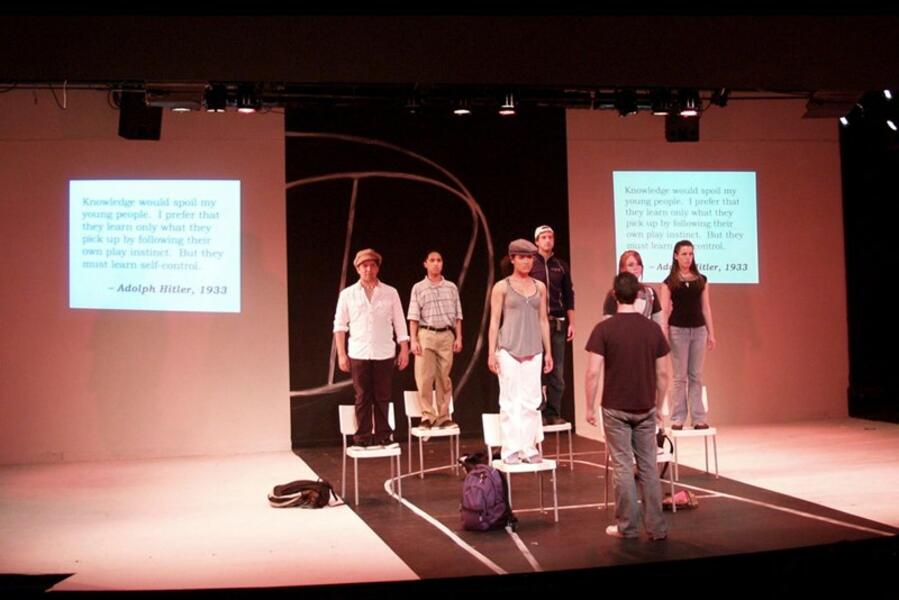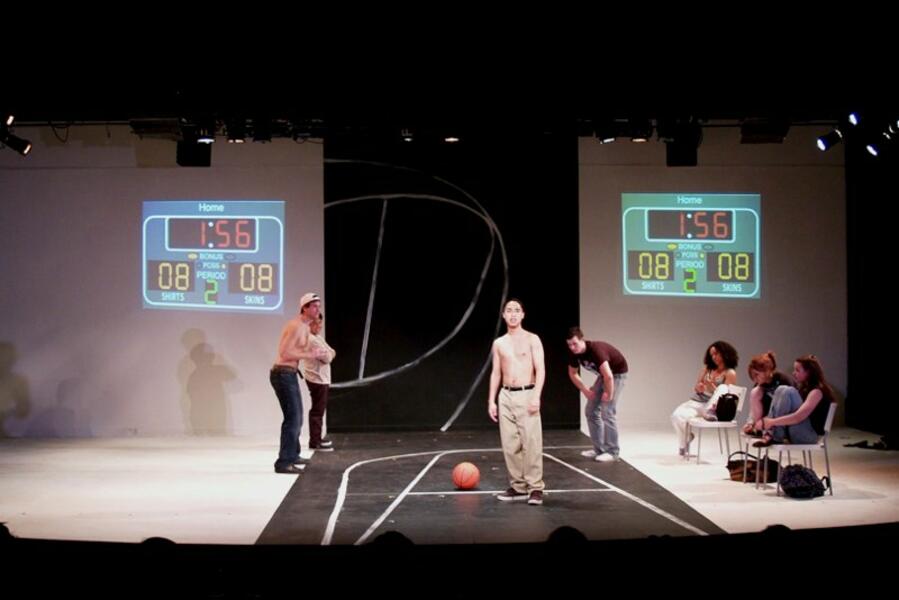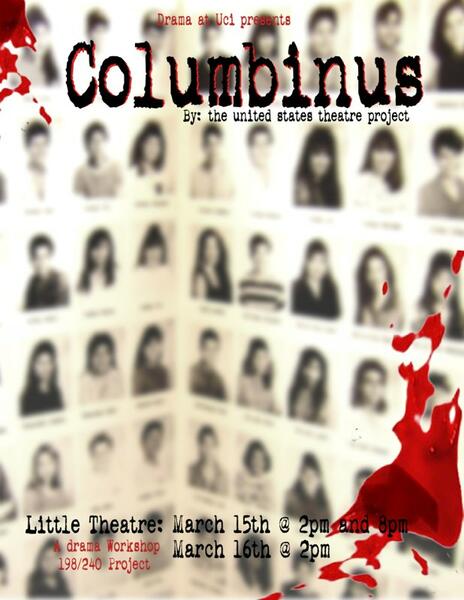About James
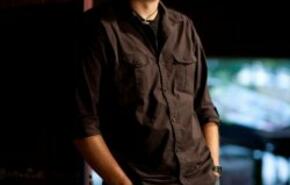
Jim Knipple
stage director/producer/educator
www.jimknipple.com
Jim is the founding Artistic Director of the Run of the Mill Theater Co. in Baltimore, Md, where credits include Miss Julie, Icarus, The Bald Soprano, and the world premiere of 13 Christs by Erik Ehn. In 2007, Run of the Mill was named Baltimore?s Best Theater Company. He is a co-creator of ?The Variations Project?, an annual theatrical event that has won multiple awards including Baltimore?s Best Production… more
stage director/producer/educator
www.jimknipple.com
Jim is the founding Artistic Director of the Run of the Mill Theater Co. in Baltimore, Md, where credits include Miss Julie, Icarus, The Bald Soprano, and the world premiere of 13 Christs by Erik Ehn. In 2007, Run of the Mill was named Baltimore?s Best Theater Company. He is a co-creator of ?The Variations Project?, an annual theatrical event that has won multiple awards including Baltimore?s Best Production… more
Jump to a project:
World Premiere Weekend
I have a strong fondness for playwrights and new plays. UC Irvine, though, did not have a strong focus on new plays, so another MFA director joined with me to produce World Premiere Weekend, a three day new play festival that premiered works by over thirty-five writers from across the country, in spaces as varied as traditional theaters, outdoor plazas, stairwells, and public restrooms.
The idea started small. We began with a website where playwrights could submit a script for consideration. I sent one email to ten playwright friends, inviting them to submit and to pass the info along to anyone else that might be interested. Within weeks we had received dozens of submissions, and by the deadline we had received over 200 scripts from around the world. In addition, I also pursued new scripts from well established playwrights, eventually landing premieres from Erik Ehn, Brooke Berman, Jamie Pacino, Charles Mee, and even Neil LaBute. (I directed the LaBute and Berman plays.)
The biggest challenge was actually matching scripts with directors. Eventually we tracked down teams for almost three dozen plays, ranging from full productions to staged reading to improvised, spontaneous physical movement pieces. We also initiated a 24 hour challenge, giving 4 playwrights a list of criteria and exactly one day to write, cast, direct, and present a new play.
The idea started small. We began with a website where playwrights could submit a script for consideration. I sent one email to ten playwright friends, inviting them to submit and to pass the info along to anyone else that might be interested. Within weeks we had received dozens of submissions, and by the deadline we had received over 200 scripts from around the world. In addition, I also pursued new scripts from well established playwrights, eventually landing premieres from Erik Ehn, Brooke Berman, Jamie Pacino, Charles Mee, and even Neil LaBute. (I directed the LaBute and Berman plays.)
The biggest challenge was actually matching scripts with directors. Eventually we tracked down teams for almost three dozen plays, ranging from full productions to staged reading to improvised, spontaneous physical movement pieces. We also initiated a 24 hour challenge, giving 4 playwrights a list of criteria and exactly one day to write, cast, direct, and present a new play.
-
World Premiere Weekend
-
World Premiere Weekend
-
World Premiere Weekend
-
World Premiere Weekend
-
World Premiere WeekendAn experimental improvised music and movement piece.
-
World Premiere WeekendA shot from one of the plays that was presented in a public restroom.
-
World Premiere Weekend
-
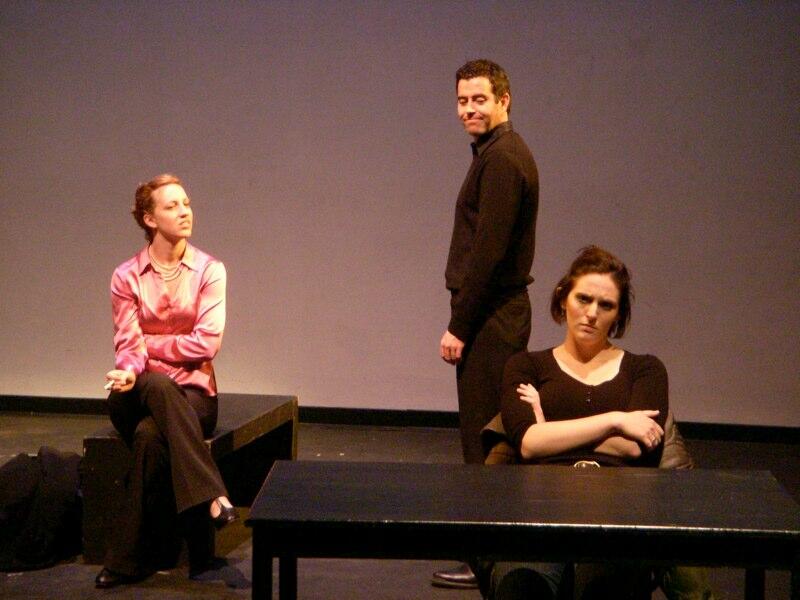 World Premiere WeekendAmsterdam by Brooke Berman, directed by Jim Knipple.
World Premiere WeekendAmsterdam by Brooke Berman, directed by Jim Knipple. -
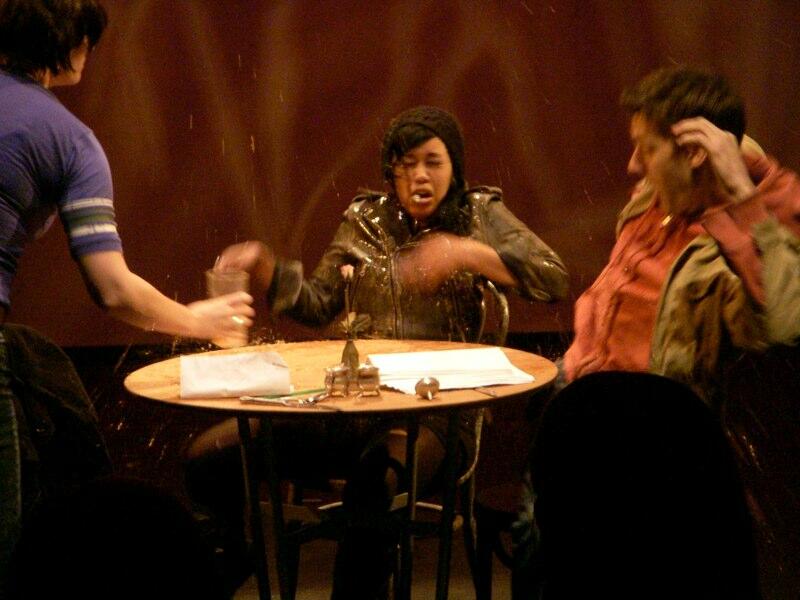 World Premiere WeekendThe Furies by Neil LaBute, directed by Jim Knipple.
World Premiere WeekendThe Furies by Neil LaBute, directed by Jim Knipple. -
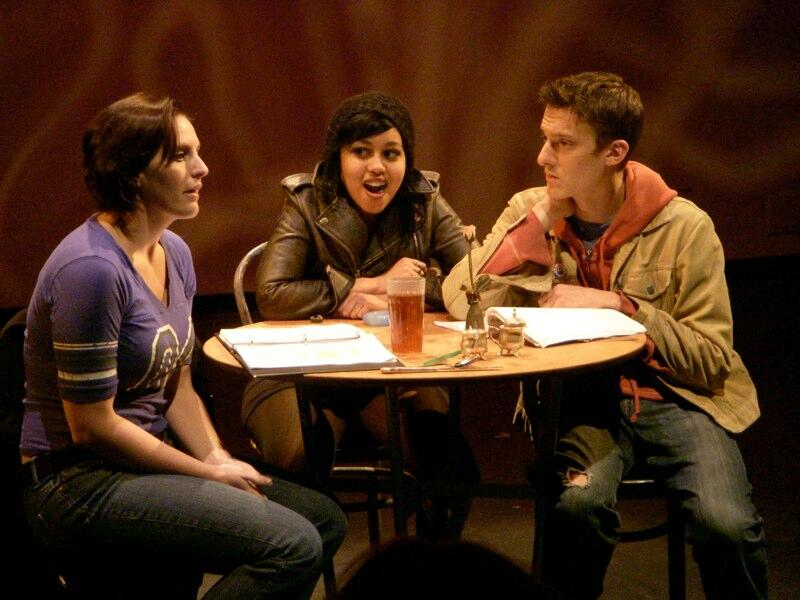 World Premiere WeekendThe Furies by Neil LaBute, directed by Jim Knipple.
World Premiere WeekendThe Furies by Neil LaBute, directed by Jim Knipple.
columbinus, directed by Jim Knipple
columbinus
by the United States Theatre Project
presented in the Little Theater, UC Irvine
Spring, 2008
columbinus explores the social pressures experienced by all teenage high school students and the ways that they repress, express, deal with, or hide their true identity. Using archetypes as a way of exploring different characters, the play winds through the homes and halls of typical students. Just before intermission, two characters transform into Dylan and Eric, the Columbine shooters. The second act follows them as they plot and execute the massacre, and the fallout of the event.
The form of the play is somewhat experimental, relying less on a structured and complete narrative and more on short vignettes that often take place in the fantasy worlds of the characters. Scenes and locales shift quickly, requiring a high level of skill in the actors, designers, and director. This ensemble based production drew upon the principles of eastern theater as well as Viewpoints to create a dynamic and engaging experience. This was a workshop production whose budget was limited to under $100.
columbinus was an intensely dark and incredibly important production that continued to resonate with the community well after the production closed.
by the United States Theatre Project
presented in the Little Theater, UC Irvine
Spring, 2008
columbinus explores the social pressures experienced by all teenage high school students and the ways that they repress, express, deal with, or hide their true identity. Using archetypes as a way of exploring different characters, the play winds through the homes and halls of typical students. Just before intermission, two characters transform into Dylan and Eric, the Columbine shooters. The second act follows them as they plot and execute the massacre, and the fallout of the event.
The form of the play is somewhat experimental, relying less on a structured and complete narrative and more on short vignettes that often take place in the fantasy worlds of the characters. Scenes and locales shift quickly, requiring a high level of skill in the actors, designers, and director. This ensemble based production drew upon the principles of eastern theater as well as Viewpoints to create a dynamic and engaging experience. This was a workshop production whose budget was limited to under $100.
columbinus was an intensely dark and incredibly important production that continued to resonate with the community well after the production closed.
Fertile Ground, directed by Jim Knipple
Fertile Ground
by Debbie Harbin
world premiere
presented at Messiah College, Grantham, PA
Fertile Ground, commissioned by Messiah College in honor of their centennial, intermingled three story lines from the first 100 years of the school. Actors switched characters at the drop of a hat. The set began as a giant square of perfectly white muslin on the floor and a matching square hanging vertically upstage. Throughout the show, dirt is dumped and arranged on the floor, and on the hanging muslin is painted a giant mural of the area surrounding the campus. The audience was invited to help paint at the end of the show.
Because of limited attendance at auditions, the play was cast entirely with female actors. Many of them played characters of different genders and/or races. I cast a very tiny African American actress to play an older, heavy white man named Merle (an actual former faculty member at the college), a choice that was met with some skepticism. But after one performance, an audience member introduced herself to me, telling me that she was the real Merle's niece, and she didn't know how we did it, but somehow, when she was watching the show, she kept thinking, "That's my Uncle Merle up there!"
The show was a critical hit at the college. Performances were consistently sold out, garnering commendations from the college president, provost, and trustees. The exciting and unexpected effect of the show was one of community. Whereas most shows end with the audiences leaving the theater, most audience members stayed after the show and mingled with each other and the actors. Some helped paint the mural, some shared their college experiences with the actors, and some made friends with the strangers sitting in the seats beside them. It is hard to describe, other than to say that it was unique and special.
by Debbie Harbin
world premiere
presented at Messiah College, Grantham, PA
Fertile Ground, commissioned by Messiah College in honor of their centennial, intermingled three story lines from the first 100 years of the school. Actors switched characters at the drop of a hat. The set began as a giant square of perfectly white muslin on the floor and a matching square hanging vertically upstage. Throughout the show, dirt is dumped and arranged on the floor, and on the hanging muslin is painted a giant mural of the area surrounding the campus. The audience was invited to help paint at the end of the show.
Because of limited attendance at auditions, the play was cast entirely with female actors. Many of them played characters of different genders and/or races. I cast a very tiny African American actress to play an older, heavy white man named Merle (an actual former faculty member at the college), a choice that was met with some skepticism. But after one performance, an audience member introduced herself to me, telling me that she was the real Merle's niece, and she didn't know how we did it, but somehow, when she was watching the show, she kept thinking, "That's my Uncle Merle up there!"
The show was a critical hit at the college. Performances were consistently sold out, garnering commendations from the college president, provost, and trustees. The exciting and unexpected effect of the show was one of community. Whereas most shows end with the audiences leaving the theater, most audience members stayed after the show and mingled with each other and the actors. Some helped paint the mural, some shared their college experiences with the actors, and some made friends with the strangers sitting in the seats beside them. It is hard to describe, other than to say that it was unique and special.
-
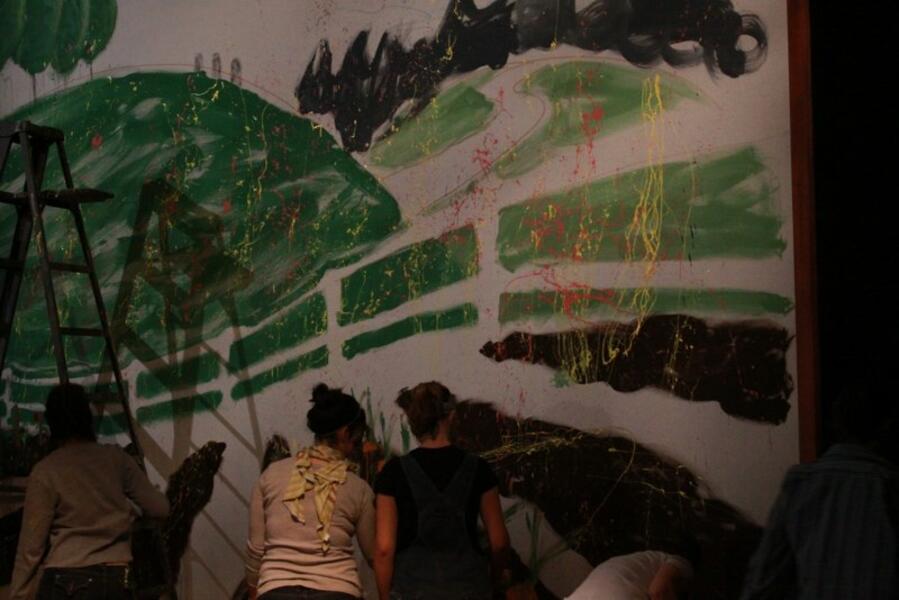 Fertile GroundAn almost finished mural, with audience members helping to complete the painting.
Fertile GroundAn almost finished mural, with audience members helping to complete the painting. -
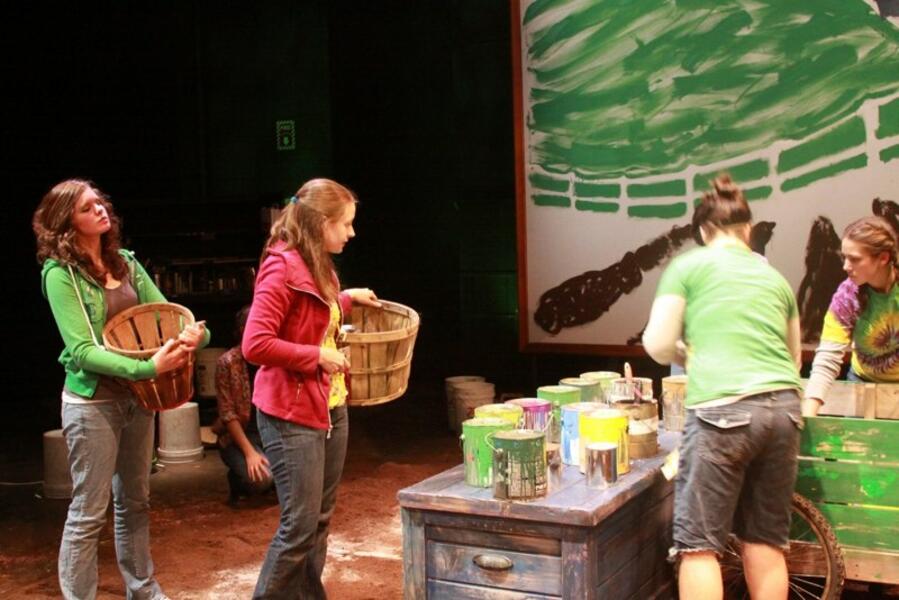 Fertile GroundA farmer's market.
Fertile GroundA farmer's market. -
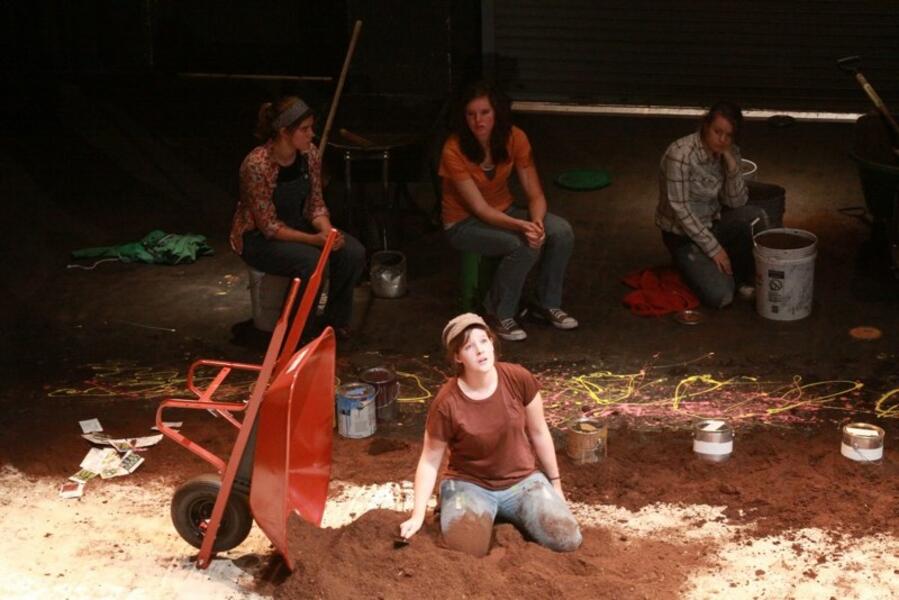 Fertile GroundAn actor using the dirt to represent a crisis of faith and ultimate redemption.
Fertile GroundAn actor using the dirt to represent a crisis of faith and ultimate redemption. -
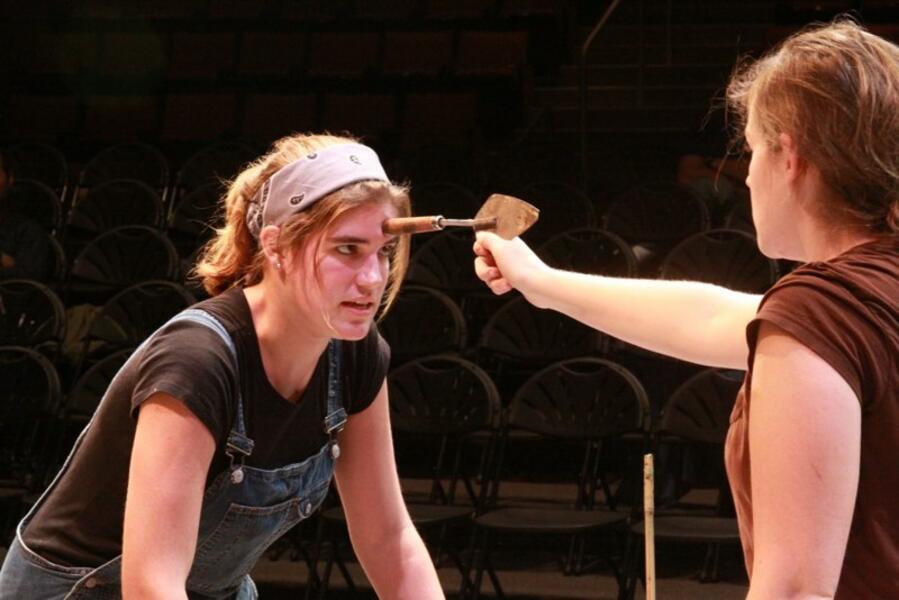 Fertile GroundA trowel is used as a gun in the show.
Fertile GroundA trowel is used as a gun in the show. -
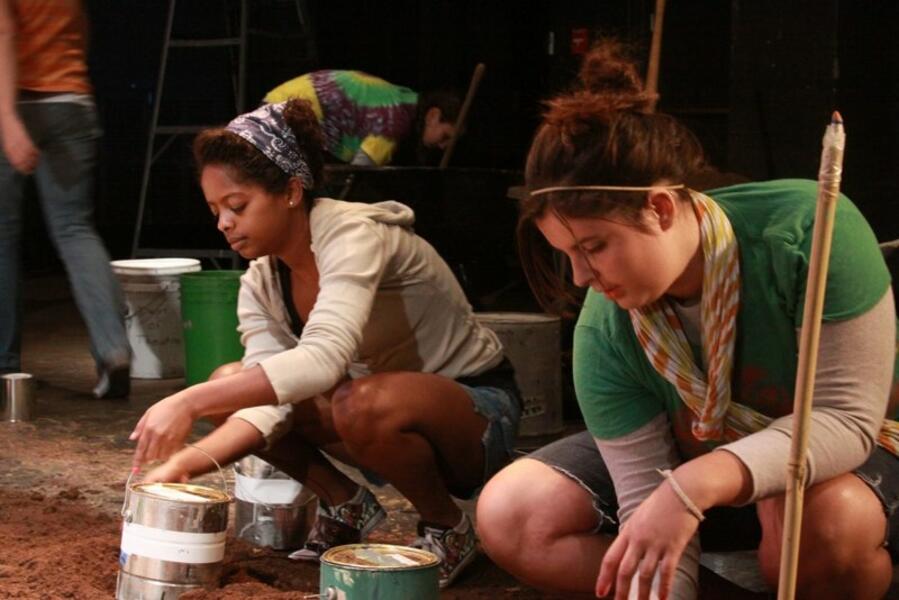 Fertile GroundActors plant "crops" in the dirt.
Fertile GroundActors plant "crops" in the dirt. -
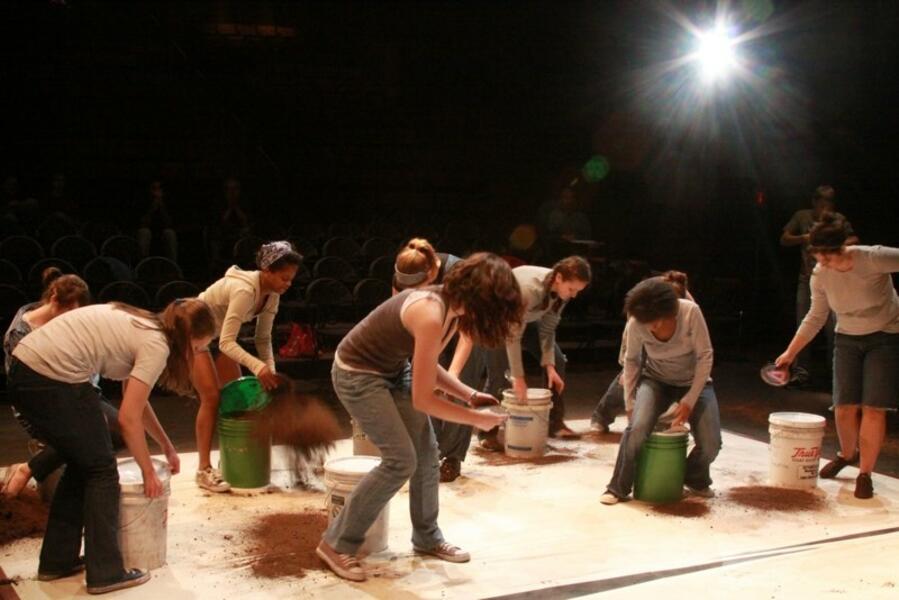 Fertile Ground
Fertile Ground -
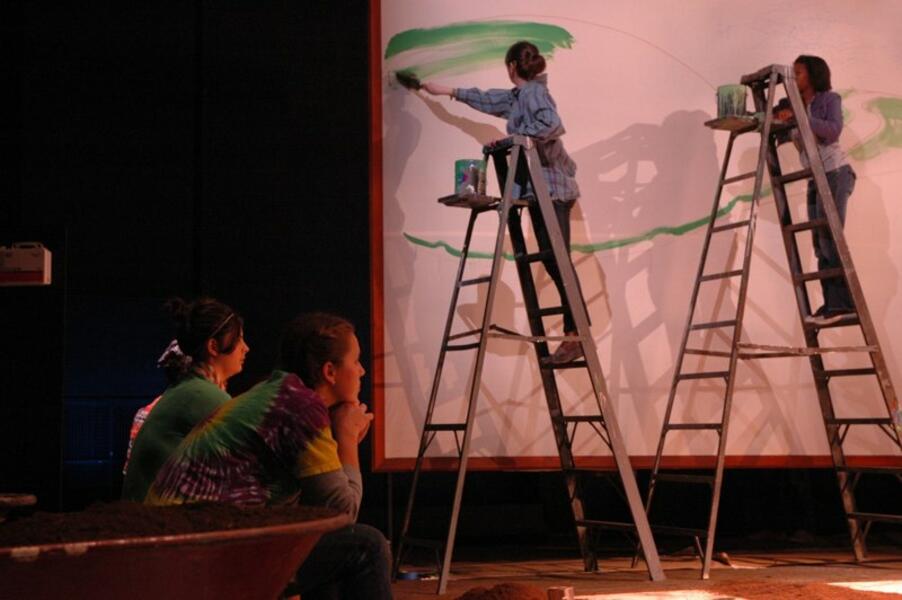 Fertile GroundThe early stages of the mural being painted during the performance.
Fertile GroundThe early stages of the mural being painted during the performance. -
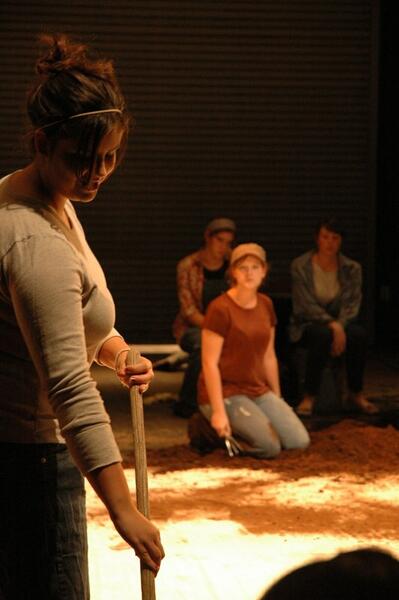 Fertile Ground
Fertile Ground -
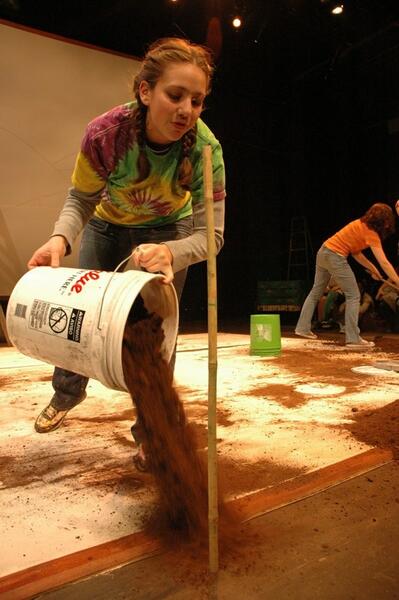 Fertile GroundDumping buckets of dirt during the performance.
Fertile GroundDumping buckets of dirt during the performance. -
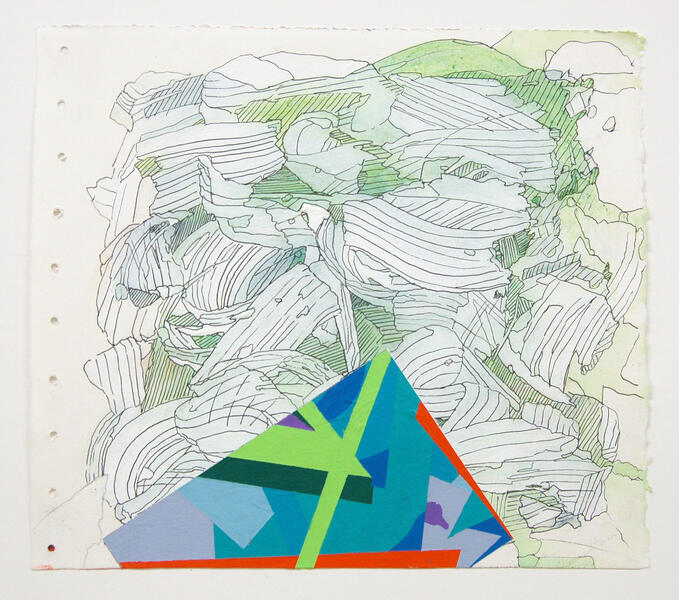 Fertile GroundA school student pets a "garden snake."
Fertile GroundA school student pets a "garden snake."
ACTion: Ecuador
I lead a group of almost two dozen actors, directors, designers, and writers to Ecuador for a month as part of Dramatic Adventure Theater's ACTion: Ecuador. We spent time in the capitol city of Quito, 14,000 feet above sea level in the Andes town of Quilotoa, the La Selva Jungle Lodge in the Amazon River basin, and the cloud forests of Mindo. DAT is an international theater company that mixes theater, community service, and adventure travel (http://www.dramaticadventure.com)
My particular cast consisted of 9 young women from Orange County, Ca. Rehearsals were combined with adventure travel (including swimming with and fishing for piranha, hiking the rim of a dormant volcano, zip lining over the cloud forest, spending 45 minutes in the ring with a raging bull, and jumping off of a 40 foot waterfall) with community service (including building a community center in the Andes and working with children in the Amazon jungle), and workshops in Andean mask dance and salsa dancing. The cast wrote all of their own material, creating a performance that was a conversation with and about their experiences in Ecuador.
After a grueling and rewarding month, we presented our short production in Ecuador and then flew directly to New York City where we joined with seven other groups who had been on the same trip (though at different times) and created their own short plays. The finished shows were presented as part of a Latin American play festival.
My particular cast consisted of 9 young women from Orange County, Ca. Rehearsals were combined with adventure travel (including swimming with and fishing for piranha, hiking the rim of a dormant volcano, zip lining over the cloud forest, spending 45 minutes in the ring with a raging bull, and jumping off of a 40 foot waterfall) with community service (including building a community center in the Andes and working with children in the Amazon jungle), and workshops in Andean mask dance and salsa dancing. The cast wrote all of their own material, creating a performance that was a conversation with and about their experiences in Ecuador.
After a grueling and rewarding month, we presented our short production in Ecuador and then flew directly to New York City where we joined with seven other groups who had been on the same trip (though at different times) and created their own short plays. The finished shows were presented as part of a Latin American play festival.
-
ACTion: EcuadorAs part of the performance, I had my cast write a song about their challenges in Quilotoa. This is a video of one of their first attempts at singing the song. Accompaniment came from a keyboard app on an iPod Touch, played through a tiny rechargeable speaker that I brought with me. The dark quality of the video is because there was no electricity in our hotel.
-
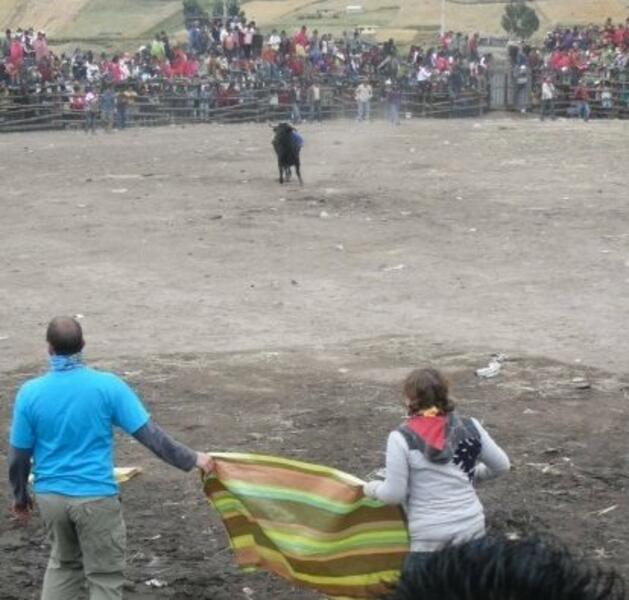 ACTion: EcuadorMe in the ring with a bull, the "adventure" part of the trip. I only came close to getting gorged once or twice.
ACTion: EcuadorMe in the ring with a bull, the "adventure" part of the trip. I only came close to getting gorged once or twice. -
ACTion: EcuadorMy cast rehearsing at the New York City theater space.
-
ACTion: EcuadorMy cast getting ready for our performance in Mindo. The next day we flew to New York and immediately began tech for when we presented the show there.
-
ACTion: EcuadorThis is me, working with some children who live in a tiny village in the Amazon jungle.
-
ACTion: EcuadorMy cast working with kids at a school in Quilotoa. They presented an improvised play for the children and parents.
-
ACTion: EcuadorWe took salsa dancing lessons at a studio in Quito. This is my cast trying to get the moves down.
-
ACTion: EcuadorMy cast at our first rehearsal, which we held at the equator. (Yes, we're doing the obligatory one-foot-in-each-hemisphere photo op...)
12Night, directed by Jim Knipple
12Night (Twelfth Night)
by William Shakespeare
music by Jay Africa
Spring, 2011
presented at Messiah College, Grantham, PA
Shakespeare's comedy about twins separated at sea who end up in the same town and mistaken for each other. I decided to present it as a rock show. All the songs in the script, as well as some lines that were written as spoken text, were turned into rock songs by Jay Africa, frontman for the LA based band The Moods. The band in the show was put together specifically for this production and consisted entirely of Messiah College students.
I had seen a lot of Shakespeare productions and rarely enjoyed the experience. I think that the text was either treated too reverentially or too flippantly, the former resulting in a outdated museum piece and the later in an unintelligible fiasco. My goal with this show was to recapture in the audience the excitement that must have accompanied the original productions of the show by tapping into the power of the poetry. I chose to do this through the poetic syntax of our time: rock and roll.
12Night mashes up Shakespeare's text of Twelfth Night with a rock and roll concert. Imagine if Count Orsino, Olivia, Viola, and the rest were rock stars communicating their deepest feelings through song. Part of the genius of Shakespeare is his use of verse to indicate heightened emotion, a technique that today has been overtaken by song. This production was faithful to the text and to the narrative techniques and devices used in the original production. Shakespeare purists appreciated that the text wasn't changed or updated in any way (in fact, I hired a highly trained Shakespearean actor to coach the college students in the text), while more contemporary theater viewers appreciated the style and clarity of the story in this production.
This was also in part an experiment in the integration of social media and performance. Audiences were encouraged to take "bootleg" photos and videos during the show (just like at a concert), so dozens of photos and several versions of the songs can be found across Facebook and YouTube. Several characters also had Twitter feeds that they would update live during each performance, and audiences could follow and interact with them live from their smartphones. In keeping with that spirit, no professional videos or photos were taken of the show, and instead relying on Facebook, YouTube, and Flickr for all documentation (including what you see here).
by William Shakespeare
music by Jay Africa
Spring, 2011
presented at Messiah College, Grantham, PA
Shakespeare's comedy about twins separated at sea who end up in the same town and mistaken for each other. I decided to present it as a rock show. All the songs in the script, as well as some lines that were written as spoken text, were turned into rock songs by Jay Africa, frontman for the LA based band The Moods. The band in the show was put together specifically for this production and consisted entirely of Messiah College students.
I had seen a lot of Shakespeare productions and rarely enjoyed the experience. I think that the text was either treated too reverentially or too flippantly, the former resulting in a outdated museum piece and the later in an unintelligible fiasco. My goal with this show was to recapture in the audience the excitement that must have accompanied the original productions of the show by tapping into the power of the poetry. I chose to do this through the poetic syntax of our time: rock and roll.
12Night mashes up Shakespeare's text of Twelfth Night with a rock and roll concert. Imagine if Count Orsino, Olivia, Viola, and the rest were rock stars communicating their deepest feelings through song. Part of the genius of Shakespeare is his use of verse to indicate heightened emotion, a technique that today has been overtaken by song. This production was faithful to the text and to the narrative techniques and devices used in the original production. Shakespeare purists appreciated that the text wasn't changed or updated in any way (in fact, I hired a highly trained Shakespearean actor to coach the college students in the text), while more contemporary theater viewers appreciated the style and clarity of the story in this production.
This was also in part an experiment in the integration of social media and performance. Audiences were encouraged to take "bootleg" photos and videos during the show (just like at a concert), so dozens of photos and several versions of the songs can be found across Facebook and YouTube. Several characters also had Twitter feeds that they would update live during each performance, and audiences could follow and interact with them live from their smartphones. In keeping with that spirit, no professional videos or photos were taken of the show, and instead relying on Facebook, YouTube, and Flickr for all documentation (including what you see here).
-
12NightOrsino and Viola sing Unstaid from 12Night. An audience "bootleg video" (which is the best way to experience the show). You can notice the intertwining of song and spoken text.
-
12NightMalvolio finds a letter planted by Toby Belch and his band of hooligans, leading him to believe that Olivia loves him. Another smartphone video, the audio cuts out for a few seconds at the beginning, but quickly returns.
-
12NightFeste speaking with Malvolio. Another photo from the phone of an audience member.
-
12NightA bouncer awaits the beginning of the show.
-
12NightFeste sings Melancholy Song from 12Night. An audience "bootleg video" (which is the best way to experience the show).
-
12NightFeste sings O Mistress Mine from 12Night. An audience "bootleg video" (which is the best way to experience the show).
365 Days/365 Plays, directed by Jim Knipple
My company, the Run of the Mill Theater Co., was selected as the only theater company in Baltimore to participate in Suzan-Lori Parks' groundbreaking 365 Days/365 Plays project. Though I was no longer running the company, I was asked to participate. I raised over $10,000 to fly a dozen actors, designers, and stage managers from Orange County, CA, to Baltimore, where we joined with local actors, directors, and designers for a two weeks of actor training, rehearsing, and performing. Joining with artists from Morgan State University (where the production was presented), I split directing duties with Shirley Basfield Dunlap.
In addition to directing, I handled all of the logistics including lodging, scheduling, airfare and transportation, meals, and budgets.
In addition to directing, I handled all of the logistics including lodging, scheduling, airfare and transportation, meals, and budgets.
-
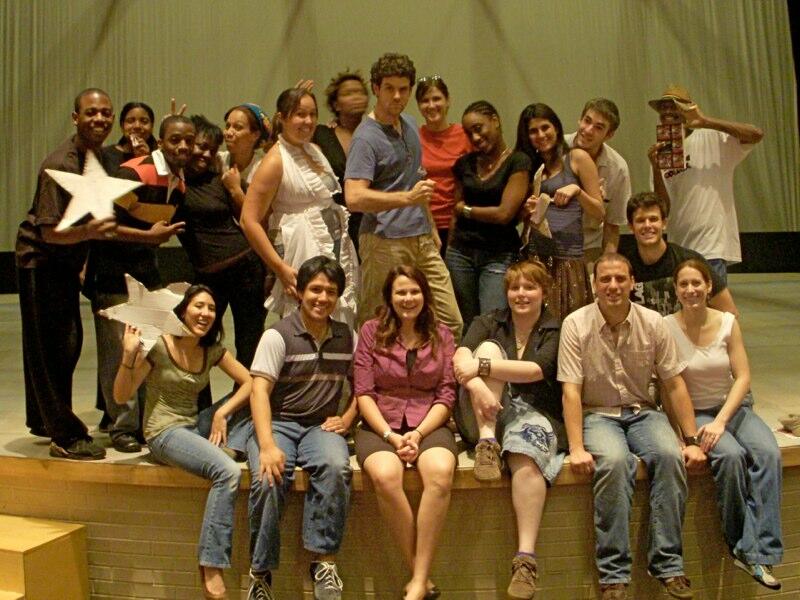 365 Days/365 PlaysThe cast and crew for 365 Days/365 Plays.
365 Days/365 PlaysThe cast and crew for 365 Days/365 Plays. -
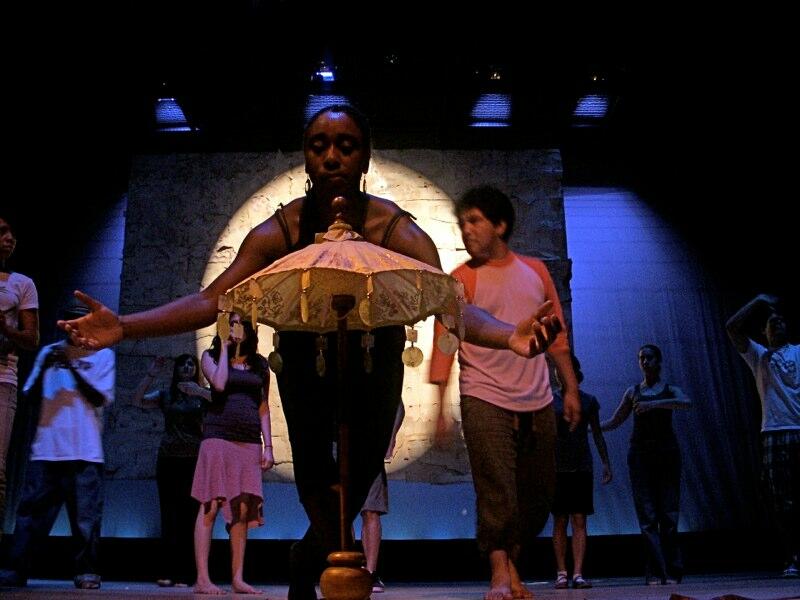 365 Days/365 Plays
365 Days/365 Plays -
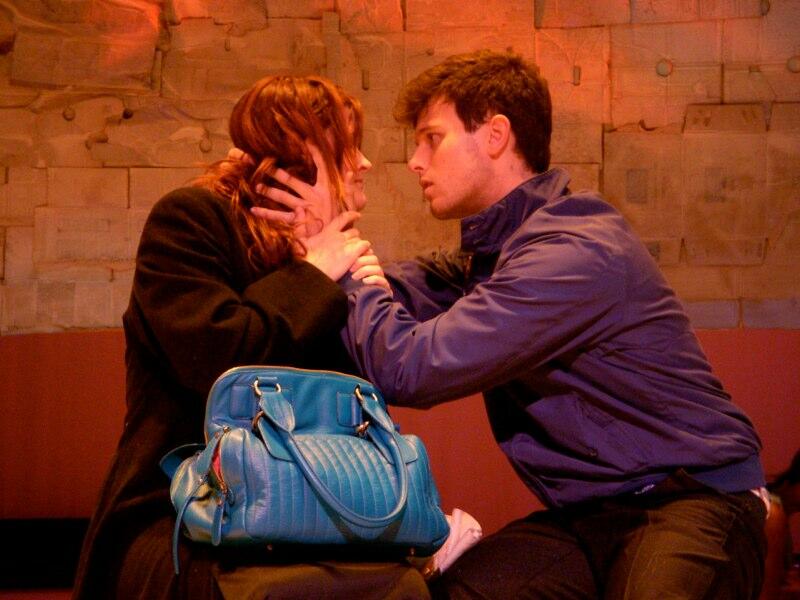 365 Days/365 Plays
365 Days/365 Plays -
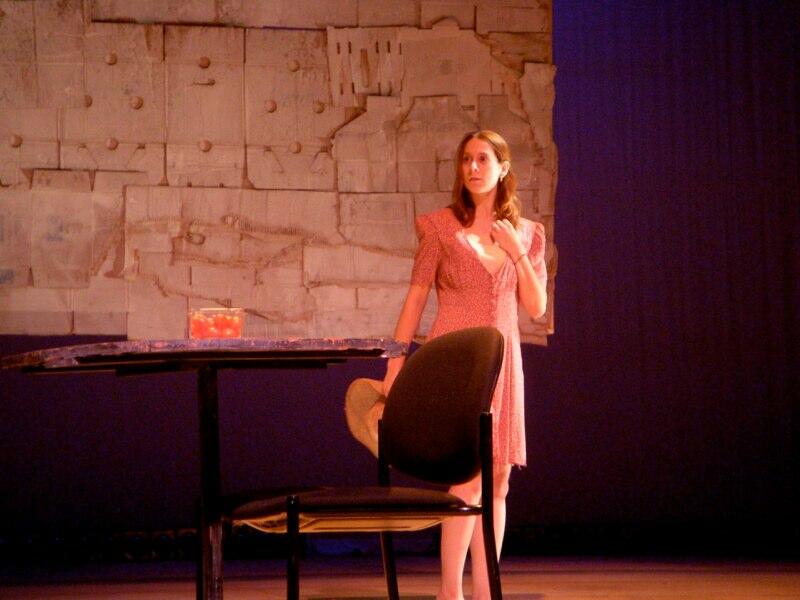 365 Days/365 Plays
365 Days/365 Plays -
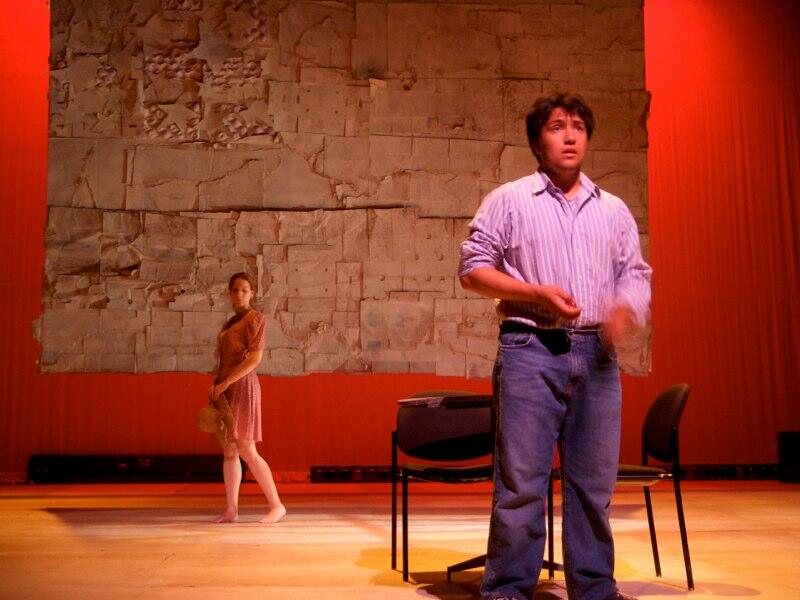 365 Days/365 Plays
365 Days/365 Plays -
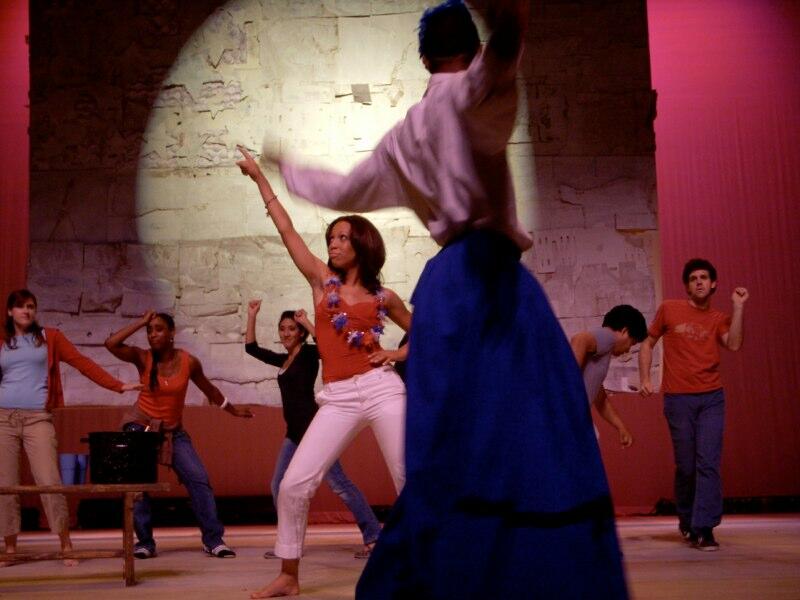 365 Days/365 Plays
365 Days/365 Plays -
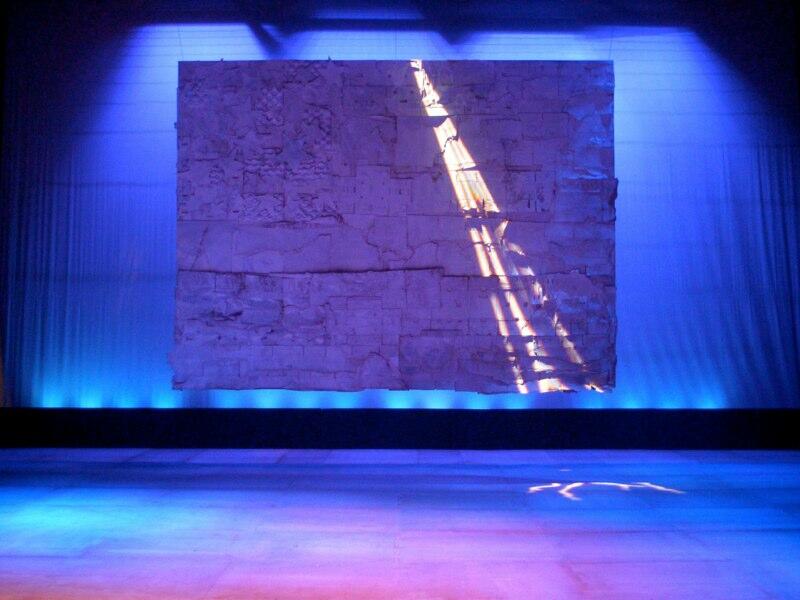 365 Days/365 PlaysThe set.
365 Days/365 PlaysThe set. -
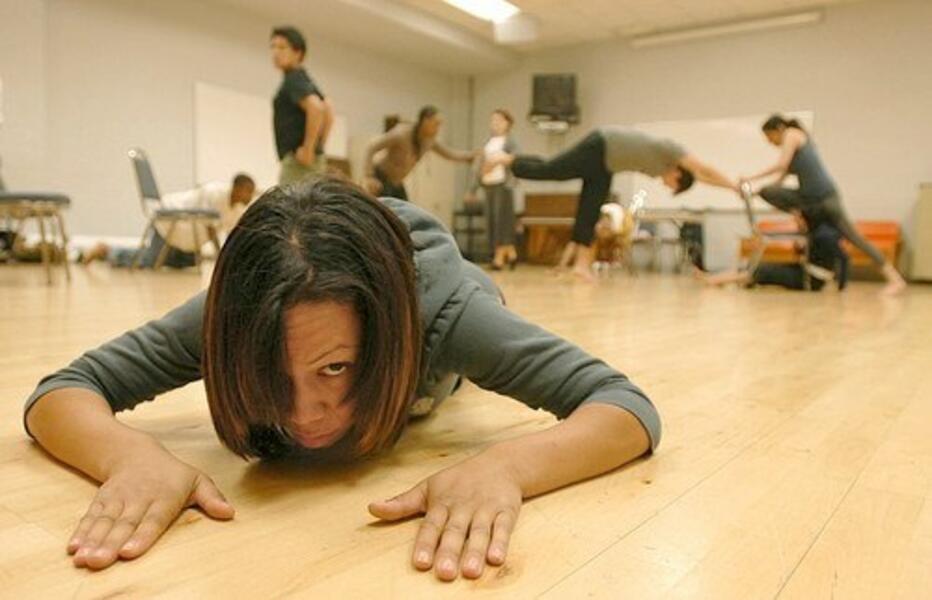 365 Days/365 Plays, directed by Jim KnippleA shot from the rehearsal room during a Viewpoint session.
365 Days/365 Plays, directed by Jim KnippleA shot from the rehearsal room during a Viewpoint session. -
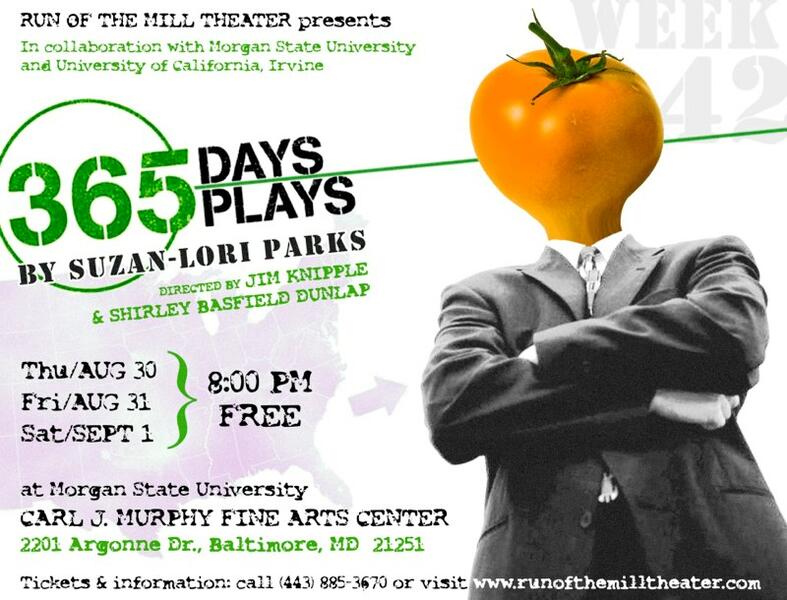 365 Days/365 PlaysThe poster.
365 Days/365 PlaysThe poster.
The Last Days of Judas Iscariot, directed by Jim Knipple
The Last Days of Judas Iscariot
by Stephen Adly Guirgis
presented Jan/Feb, 2008
The Studio Theater @ UC Irvine
The case of Judas Iscariot, history's most notorious villain, is brought before an afterlife appeals court. Witnesses include his mother, Pontius Pilate, Mother Teresa, and Sigmund Freud. The production was conceived so that the audience felt that they were actually in the courtroom during the proceedings.
Presented as part of the main stage season at UC Irvine, one of the country's top dramatic training programs. A production team of half a dozen designers and over fifty production crew collaborated with me to create this visually stunning production. Audiences felt like they were entering an afterlife appeals court and were watching the event unfold live around them.
The production was designed by Josh Steadman, a rising star in the LA art scene and stared several actors who have gone on to promising careers on stage and in film.
by Stephen Adly Guirgis
presented Jan/Feb, 2008
The Studio Theater @ UC Irvine
The case of Judas Iscariot, history's most notorious villain, is brought before an afterlife appeals court. Witnesses include his mother, Pontius Pilate, Mother Teresa, and Sigmund Freud. The production was conceived so that the audience felt that they were actually in the courtroom during the proceedings.
Presented as part of the main stage season at UC Irvine, one of the country's top dramatic training programs. A production team of half a dozen designers and over fifty production crew collaborated with me to create this visually stunning production. Audiences felt like they were entering an afterlife appeals court and were watching the event unfold live around them.
The production was designed by Josh Steadman, a rising star in the LA art scene and stared several actors who have gone on to promising careers on stage and in film.
-
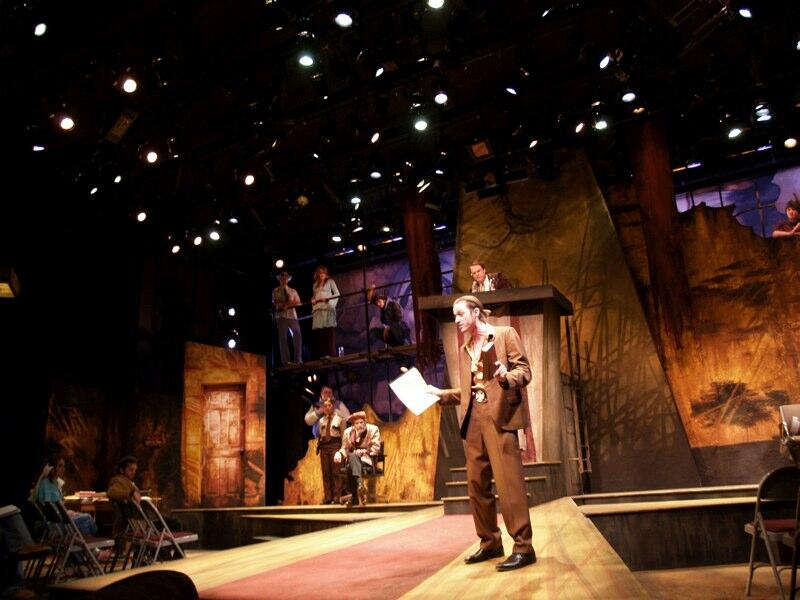 The Last Days of Judas IscariotEl Fayoumy questioning Caiaphas the Elder.
The Last Days of Judas IscariotEl Fayoumy questioning Caiaphas the Elder. -
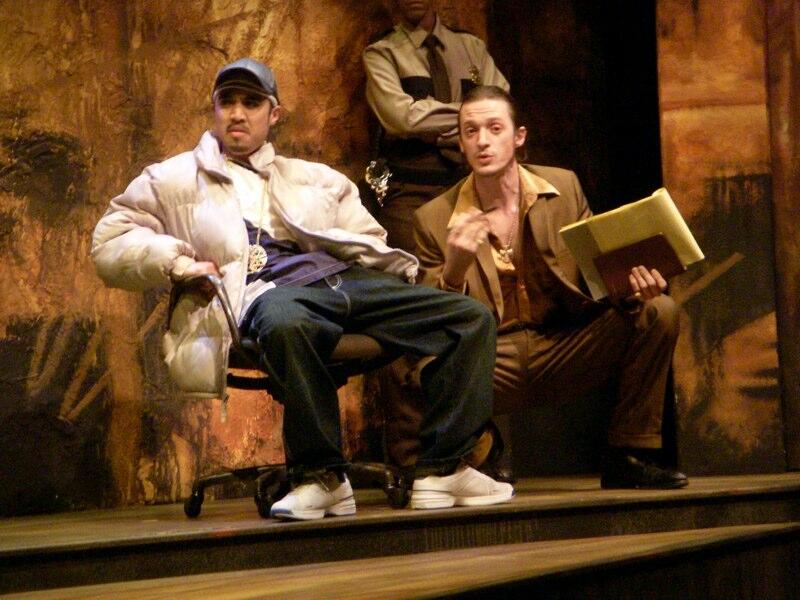 The Last Days of Judas IscariotEl Fayoumy questions Simon the Zealot.
The Last Days of Judas IscariotEl Fayoumy questions Simon the Zealot. -
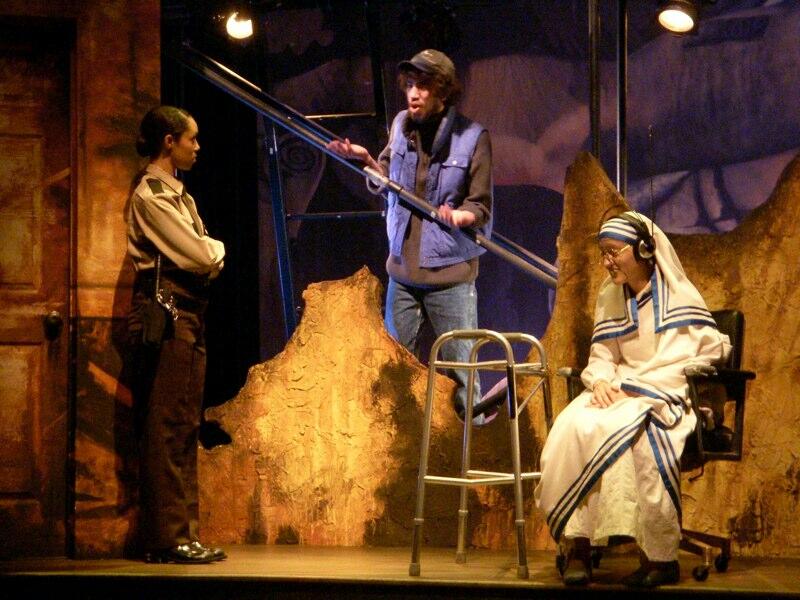 The Last Days of Judas IscariotSaint Peter speaks to the Bailiff while Mother Teresa listens in.
The Last Days of Judas IscariotSaint Peter speaks to the Bailiff while Mother Teresa listens in. -
The Last Days of Judas IscariotSaint Monica and Judas.
-
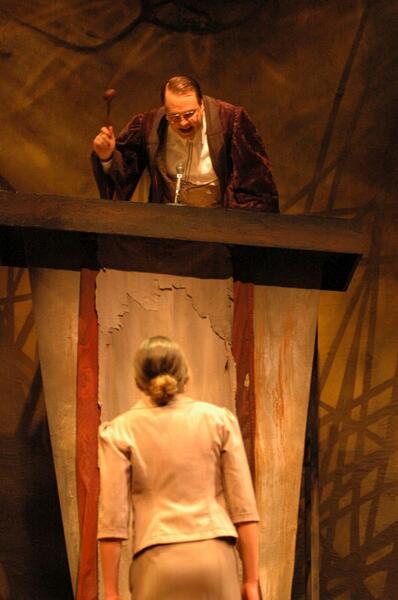 The Last Days of Judas IscariotThe judge gives it to the defense councilor.
The Last Days of Judas IscariotThe judge gives it to the defense councilor. -
The Last Days of Judas IscariotA confabulation at the judge's bench.
-
The Last Days of Judas IscariotAn angel gives the exposition.
-
The Last Days of Judas IscariotJesus and Henrietta Iscariot.
-
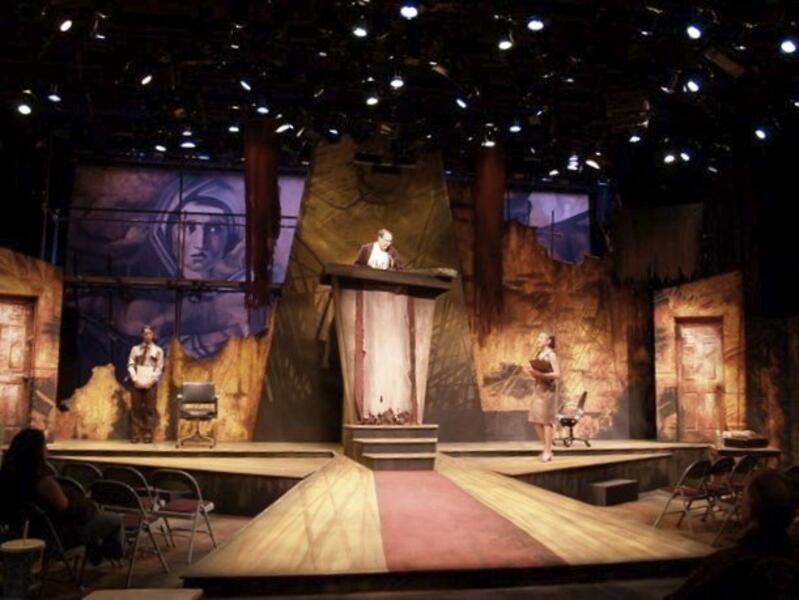 The Last Days of Judas IscariotThe set design. Inspired by my trip to Bombay Beach, CA. A forced perspective set with an over-scale judge's bench. The walls looked as if they were eroding, and a giant classical mural could be seen through the holes in the wall. Scaffolding behind the walls gave the feel that the building was under renovation in perpetuity, and allowed for viewing positions for actors during the show. Set design was by Josh Steadman, one of LA's premier young visual artists.
The Last Days of Judas IscariotThe set design. Inspired by my trip to Bombay Beach, CA. A forced perspective set with an over-scale judge's bench. The walls looked as if they were eroding, and a giant classical mural could be seen through the holes in the wall. Scaffolding behind the walls gave the feel that the building was under renovation in perpetuity, and allowed for viewing positions for actors during the show. Set design was by Josh Steadman, one of LA's premier young visual artists. -
The Last Days of Judas IscariotA short video from the production. In this scene, Judas (a live actor) interacts with Mathias of Galilee (a pre-recorded video projection). Notice the handoff of a real spinning top from the live actor to the projected actor. (I'm especially proud of that...)
Book of Tink by Erik Ehn, directed by Jim Knipple
Book of Tink
by Erik Ehn
music by Mazie Wilson
presented March, 2009
The Studio Theater @ UC Irvine
A phantasmagorical re-imagining of the Peter Pan narrative by one of America?s foremost visionary playwrights. A Broadway musical for an alternate universe. The parts of story of Peter Pan that got lost in the cracks of the narrative sidewalk.
Presented as a main stage production at UC Irvine, one of the country's leading dramatic training programs. A cast of over two dozen actors was complimented by over fifty design and production crew members to pull off an amazing feat of sound and spectacle. Audience members sat on mats (reminiscent of those in kindergarten classrooms) as the story of Peter Pan, Wendy, and Tinkerbell unfolded around and above them. Two actors simultaneously portrayed Peter Pan, a nod to both the dualistic nature of the character and the traditional casting of a woman to play the part of a boy. Over a dozen fairies populate the play, with each having an individually designed and hand-stitched costume that reflected their name (Ball Point, Trama Center, Truffaut, etc). When the fairies all end up in the underworld, they don orange jumpsuits and small puppets outfitted exactly as each fairy. Large steel playground units whirl about the stage, shifting locations with cinematic effect. At one point a silent film breaks out, with the fairies handing each audience member their own tinted viewer through which to view it.
Erik Ehn provided the lyrics, with Mazie Wilson providing the choral scoring.
by Erik Ehn
music by Mazie Wilson
presented March, 2009
The Studio Theater @ UC Irvine
A phantasmagorical re-imagining of the Peter Pan narrative by one of America?s foremost visionary playwrights. A Broadway musical for an alternate universe. The parts of story of Peter Pan that got lost in the cracks of the narrative sidewalk.
Presented as a main stage production at UC Irvine, one of the country's leading dramatic training programs. A cast of over two dozen actors was complimented by over fifty design and production crew members to pull off an amazing feat of sound and spectacle. Audience members sat on mats (reminiscent of those in kindergarten classrooms) as the story of Peter Pan, Wendy, and Tinkerbell unfolded around and above them. Two actors simultaneously portrayed Peter Pan, a nod to both the dualistic nature of the character and the traditional casting of a woman to play the part of a boy. Over a dozen fairies populate the play, with each having an individually designed and hand-stitched costume that reflected their name (Ball Point, Trama Center, Truffaut, etc). When the fairies all end up in the underworld, they don orange jumpsuits and small puppets outfitted exactly as each fairy. Large steel playground units whirl about the stage, shifting locations with cinematic effect. At one point a silent film breaks out, with the fairies handing each audience member their own tinted viewer through which to view it.
Erik Ehn provided the lyrics, with Mazie Wilson providing the choral scoring.
-
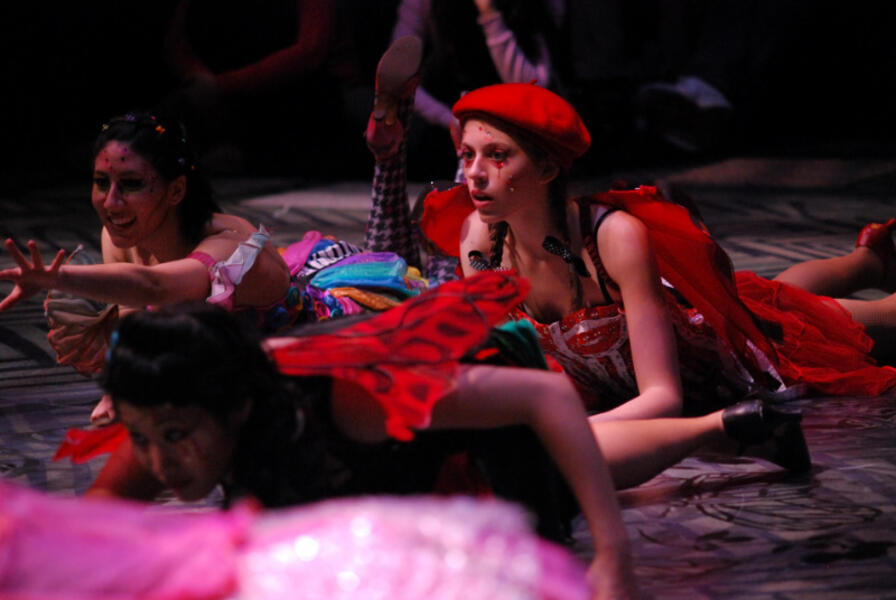 Book of TinkFairies. Each fairy's costume was individually designed and created by hand.
Book of TinkFairies. Each fairy's costume was individually designed and created by hand. -
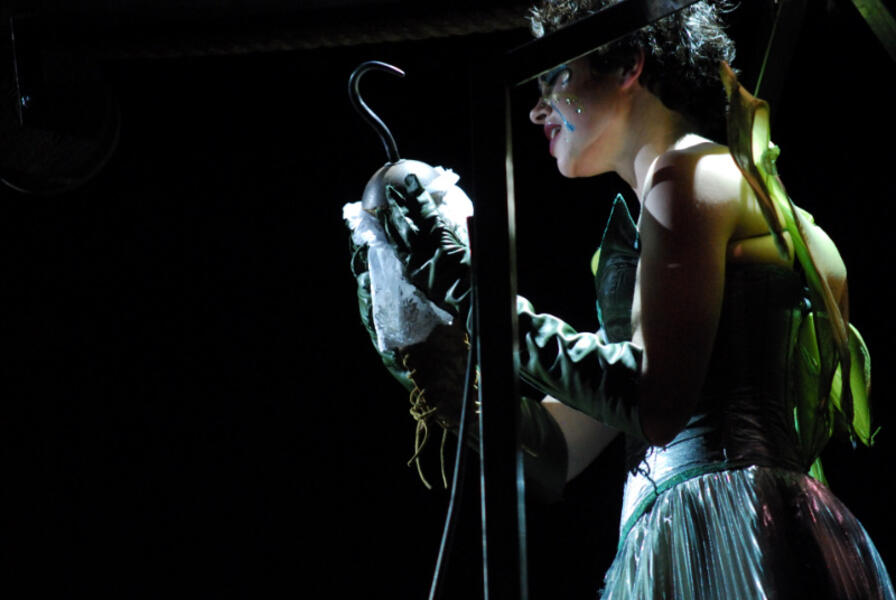 Book of TinkTink with Hook's hook.
Book of TinkTink with Hook's hook. -
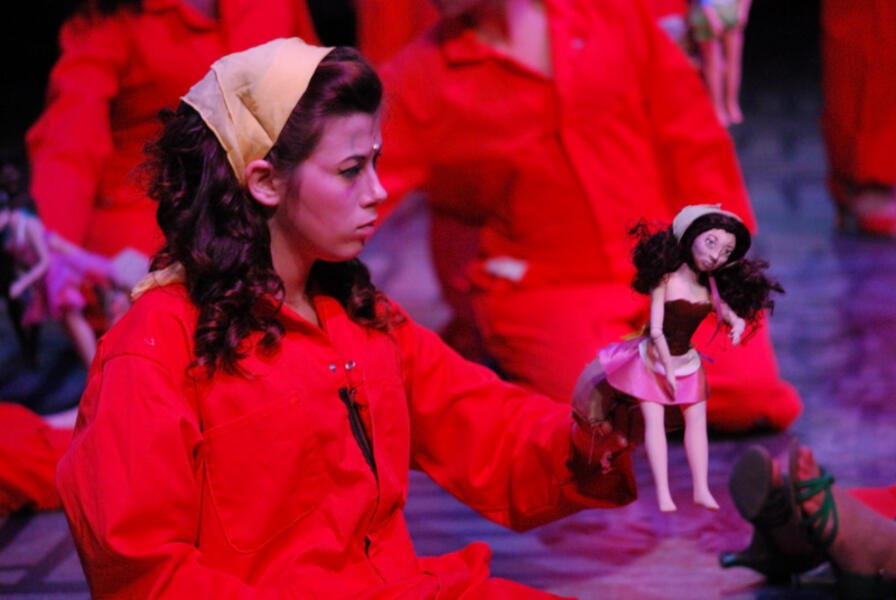 Book of TinkA fairy with her puppet. Each fairy had a puppet that was an exact replica of the actress in costume.
Book of TinkA fairy with her puppet. Each fairy had a puppet that was an exact replica of the actress in costume. -
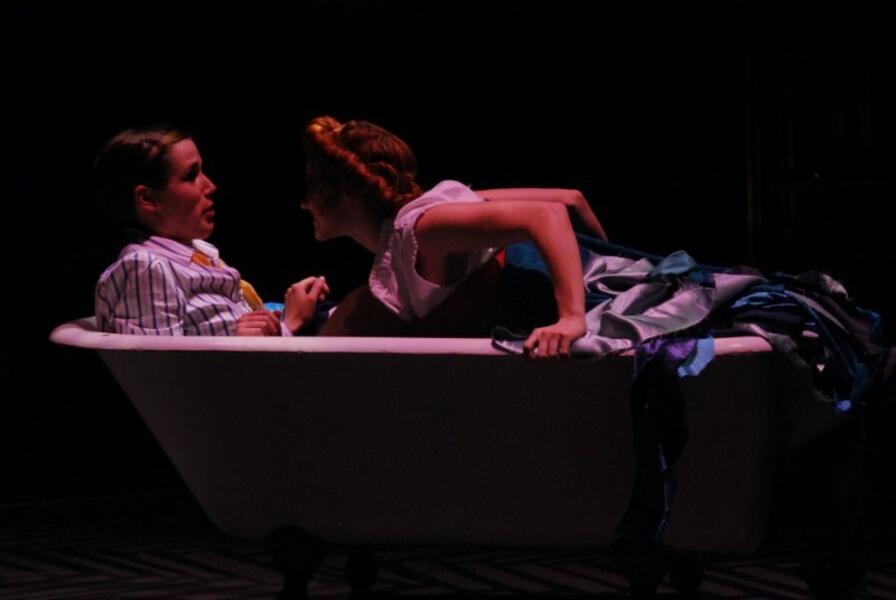 Book of TinkWendy surprised in the bathtub by a Mermaid Prostitute.
Book of TinkWendy surprised in the bathtub by a Mermaid Prostitute. -
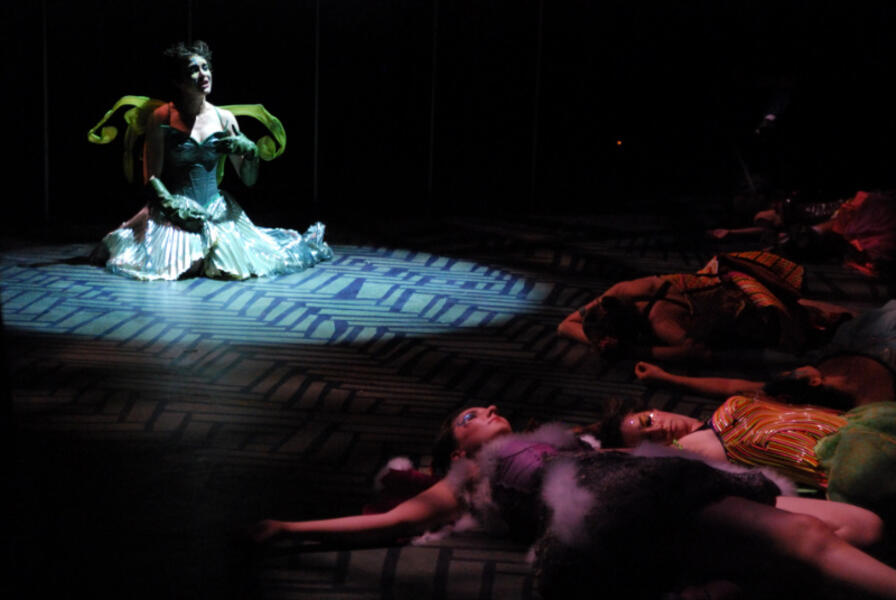 Book of TinkTink, surrounded by passed-out fairies.
Book of TinkTink, surrounded by passed-out fairies. -
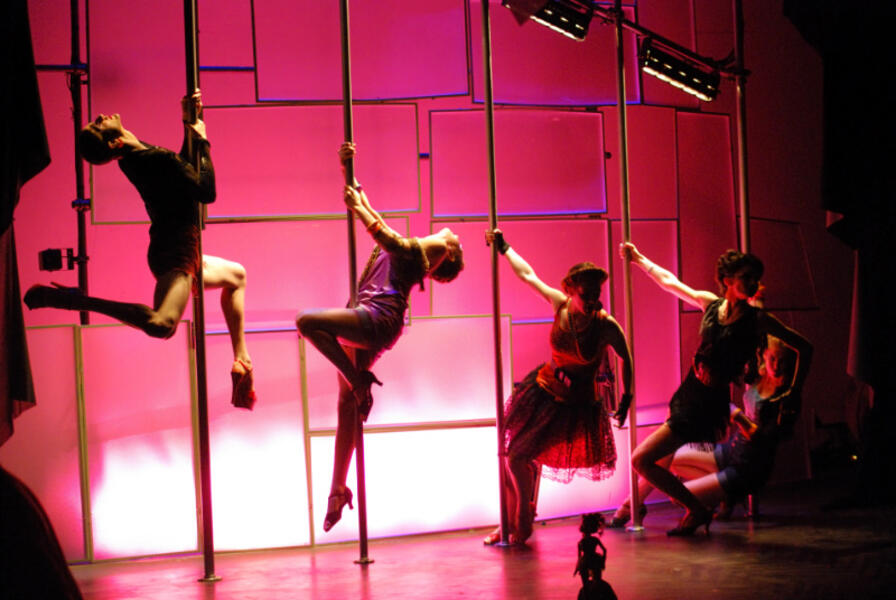 Book of TinkMermaid Prostitutes dancing on poles.
Book of TinkMermaid Prostitutes dancing on poles. -
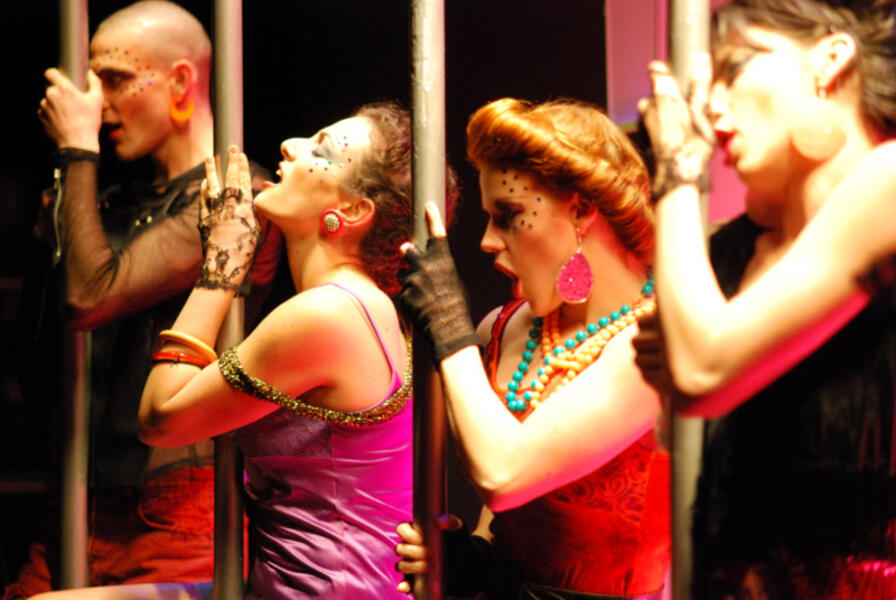 Book of TinkMermaid Prostitutes dancing and singing.
Book of TinkMermaid Prostitutes dancing and singing. -
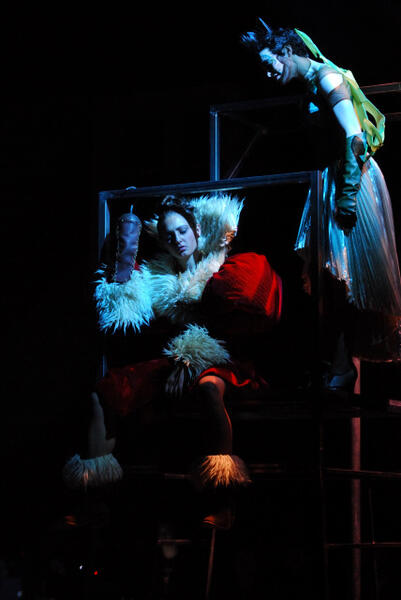 Book of TinkHook and Tink. Hook's hook was actually on loan from a major motion picture studio and insured for $100,000!
Book of TinkHook and Tink. Hook's hook was actually on loan from a major motion picture studio and insured for $100,000! -
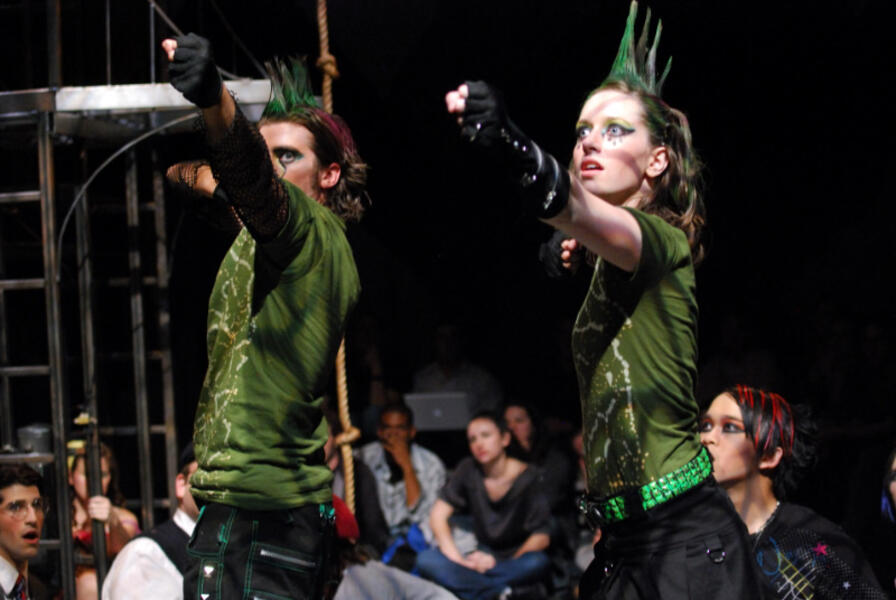 Book of TinkPeter Pan and Peter Pan (two actors, one male and one female, simultaneously played the same role)
Book of TinkPeter Pan and Peter Pan (two actors, one male and one female, simultaneously played the same role) -
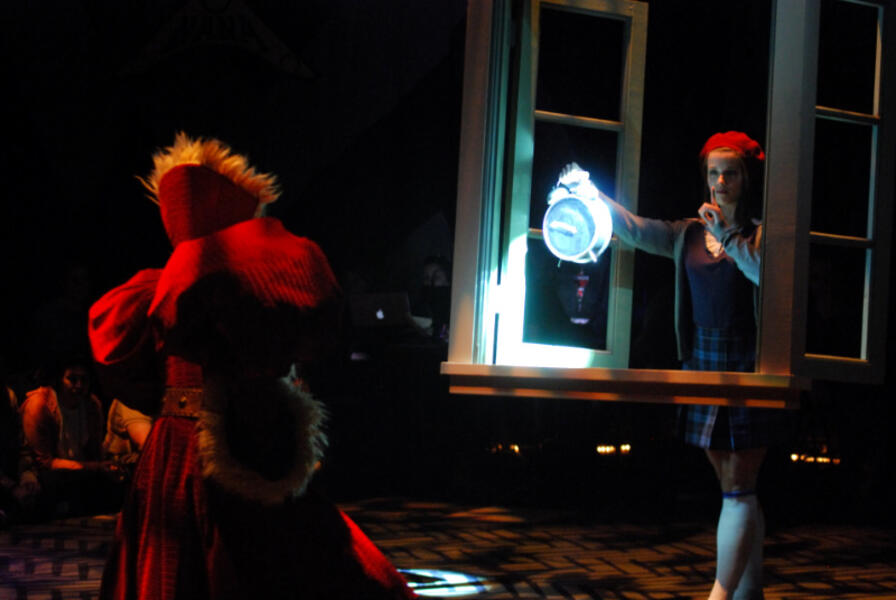 Book of TinkWendy and Hook
Book of TinkWendy and Hook



